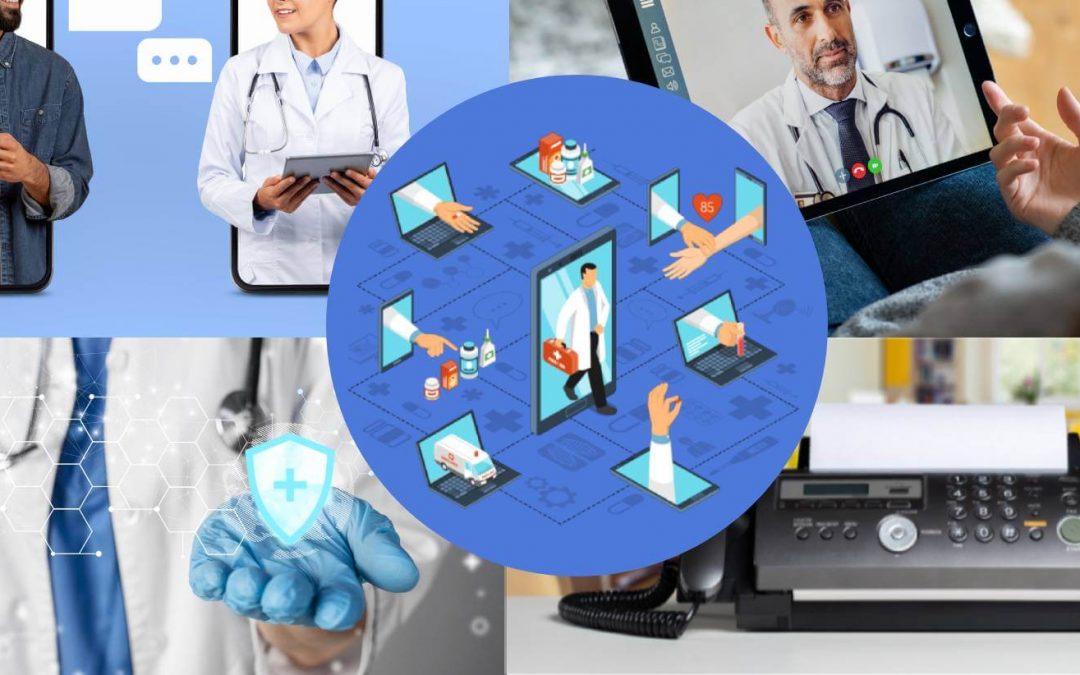When it comes to healthcare, time is of the essence and every second counts. However, even with impeccable face-to-face communication skills, hospitals, clinics, long-term care, and home healthcare platforms still struggle to create a real-time collaborative environment. It doesn’t matter how much modern healthcare technology you have or what strategies healthcare facilities use to pass on information; nothing beats secure and reliable real-time group and individual communication.
The best way to implement this is through an all-in-one healthcare communication platform. But what does this mean? Thousands of different software are available to help healthcare professionals, so how can you choose the best option? Here, we’ll provide you with six essential healthcare communication features to look for when choosing your software.
Current Challenges in the Home Healthcare Industry
Effective communication is a pillar of any healthcare organization, but it faces unique challenges in the home healthcare industry with staff constantly out in the field, sharing and discussing patient information can be increasingly difficult. One of the biggest challenges is fragmented communication among healthcare professionals, caregivers, and patients. Patients suffer when there is a lack of coordination, and healthcare outcomes decrease.
Issues with scheduling, onboarding, care coordination, and patient communication also exist in home healthcare settings. The more visits are required, the more complex this becomes, highlighting the importance of communication. Still, sending a text message containing Personal Health Information (PHI) on a personal phone doesn’t suffice due to the need for HIPAA-compliant communication, further complicating the situation. While electronic health records (EHR) provide patient medical history, being able to communicate as a team in accountable care groups (including staff, operations, nurses, and physicians) regarding questions or clarifications in real time requires an integrated communication solution.
How a Good Communication Platform Benefits Home Healthcare
The benefits of improving team-oriented communication solutions extend to all healthcare providers and patients. Stronger communication creates a cascading number of benefits, from increased quality and speed of care to decreased operational costs and staff burnout. Some of the most notable benefits of a strong, secure healthcare communication software include the following:
- Incremental revenue and reduced operational cost
- Increased onboarding efficiency and patient volume
- Increased satisfaction, STAR ratings, and bonus payments
- Reduced hospital re-admissions, improving care continuity
- Decreased risk of HIPPA violations, fines, data breaches, and fraud
- Streamlined workflows for healthcare delivery plans
- More accurate documentation and record-sharing
- Integration with electronic health record systems (EHRs)
- Real-time, secure instant messaging, text, fax, phone calls, and more
- Stronger, accountable group collaboration among all healthcare professionals
- Access to features like telehealth for more efficient patient care
- Creates groups that can deliver more responsive and proactive patient-centered care
6 Healthcare Communication Software Features to Enhance Patient Care
The best communication in healthcare involves more than a phone call or instant message. It includes creating a collaborative space that enables healthcare providers to provide better care, operate more efficiently, and increase interpersonal communication across various departments. But what does this mean? What features should a communication platform include for the best outcomes? Here are six essential features of an effective healthcare communication platform.
1. Access to all real-time critical communication tools across commonly used devices
Effective collaboration in healthcare involves eliminating slow, non-real-time communication methods such as email and voicemails. Teams should be able to communicate in groups or individually using the most productive modes, including group or individual text or chat, group collaboration and conversations, video, voice (audio/phone), and even secure fax. The communication platform must support various form factors, accommodating how each staff member works—whether on desktop or mobile—and function seamlessly across standard operating systems like iOS, Android, Windows, and Mac OS.
Collaboration in healthcare extends beyond one-on-one interactions; it requires dynamic teams comprising referring health partners, administrative staff, doctors, nurses, specialists, caregivers, and often family members. A robust communication platform with collaborative tools enables seamless and real-time group communication across this network, which is critical for patient-centered healthcare services. Essential tools should include secure messaging, file sharing, document signature and annotation, and group chat and conversation capabilities, allowing everyone involved in a patient’s care to communicate openly and effectively. Additionally, encrypted messaging and data security measures must be in place for all communication tools to ensure that patient health information remains protected and compliant with HIPAA regulations
2. Call-Backs, Phone Dialer and Caller ID Essentials for Care Coordination
When care is provided outside of a facility, and a caregiver or provider can’t reach a patient or client, it can impact the client’s health and satisfaction with care. Additionally, this can negatively impact on revenue and cost by reducing the volume of patients seen on a daily basis. A blocked call may also end up marked as “junk” or be reported as potential spam by clients and patients, creating addtional barriers, list time and cost trying to correct.
This can be avoided with collaboration solutions that support both phone dialer functions and custom caller ID capability. Phone dialer features allow for the staff member to use any cell phone of choice, but requires calls to be placed through the applications phone dial mode (not the native dialer on the cell phone). Custom caller ID capability then allows all staff to select a dedicated recognized phone number, and an assigned organization name, to appear in the caller ID of any outbound call (and not that of their individual cell phone). This helps ensure that any patient, caregiver, provider, or integrated care partner can identify the inbound call with the healthcare agency. The more calls answered, the more patients are seen, leading to better outcomes, margin, and incremental revenue.
3. Key Security and Compliance Features
In healthcare, protecting patient information isn’t just a courtesy—it’s a legal requirement. Even if they advertise encryption, mainstream messaging platforms or SMS texting won’t cut it. Failure to find a communication platform with this feature can result in costly fines and severe issues with patient trust. So, when evaluating a healthcare communication platform, ensure it prioritizes security and regulatory compliance to protect sensitive patient data. Essential security features include end-to-end encryption (E2EE), which ensures that only intended recipients can access messages, and strict access controls, which limit data access to authorized users only.
Compliance with HIPAA, GDPR, SOC 2, and other relevant regulations are usually non-negotiable in healthcare software, especially for home healthcare providers handling PHI in diverse settings. Look for platforms that have robust auditing and monitoring tools that track access and usage patterns for greater accountability.
4. Workflow Optimization, Automation and Task Management
Workflow optimization and automation can be a game-changer for healthcare providers who must manage complex administrative tasks while delivering patient care. An effective communication platform should incorporate workflow automation tools (e-signature, document editor) that streamline patient intake, record updates, and billing, allowing providers to focus more on patient interactions and less on manual paperwork.
With home healthcare, where professionals often multitask and manage multiple patients, these tools help to create a structured yet adaptable work environment. Whether in the field or office, a platform that incorporates provisioned and flexible file sharing and management, supporting audio, video, documents, images, and other digital content is a necessity to save time, maximize productivity, and ensure security compliance.
5. Tools to Adjust and Update Care Management Plans in Real Time
Care management is an evolving process, and the ability to update care plans in real time is invaluable for improving outcomes and addressing patient needs as they arise. A healthcare communication platform should allow providers to make immediate adjustments to care plans based on new patient data, lab results, or changes in health status.
This feature lets providers document observations and alter treatment strategies instantly, ensuring the care plan remains relevant and tailored to the patient’s condition. Moreover, updating care plans on the go is especially beneficial for home healthcare, where providers may need to respond to unexpected changes during a visit. This adaptability improves the quality of care and empowers patients to stay informed and involved in their health decisions. In an industry where responsiveness is key, real-time care management tools ensure that every interaction with a patient can be as effective and accurate as possible.
6. Telehealth Communication Capabilities or Telemedicine Support
Telehealth capabilities are no longer optional in today’s healthcare landscape—they’re essential. A healthcare communication platform with integrated telehealth features enables providers to conduct virtual consultations, follow-ups, and emergency assessments directly through the system. This is particularly valuable for home healthcare, where in-person visits may not always be feasible or timely.
Telemedicine support also allows specialists to join consultations, making it easier for primary providers to collaborate and seek expert opinions in real-time. Additionally, telehealth bridges the gap for patients with mobility issues, chronic conditions, or those in remote areas by bringing medical expertise into their homes.
The platform should support video and voice calls, along with secure messaging, to allow for diverse communication methods that meet the specific needs of patients and providers.
Choosing a Trusted Communication Platform Among Healthcare Professionals
Organizations should focus on a communication solution that is easy to adopt, helps your entire staff, works with stakeholders outside your organization, integrates with your EHR, and is usable on any device. It must also be HIPAA-compliant, secure, and affordable. Look for those with a track record of positive reviews and ratings and case examples of customer success.
About Skyscape
Skyscape Provides BUZZ, an all-in-one, real-time HIPAA-compliant clinical collaboration and communication platform. It is accessible via desktop, tablet, and mobile phone messaging platforms, enabling physicians, caregivers, partners, staff, and nurses to securely deliver and coordinate care from the office, a patient’s home, or while in transit.
With easy access to the entire care delivery team and other groups by smartphone or desktop, home health and hospice staff are equipped for any clinical challenge. Secure communication features allow healthcare workers to coordinate home visits, connect with referring agencies, update family members, and reach other medical professionals for questions, lab results, prescription requests, and more. By offering telehealth capabilities, secure messaging, an AI clinical knowledge base, and streamlined document management, Buzz by Skyscape empowers healthcare professionals to deliver high-quality care with greater convenience and effectiveness. Visit our FAQ page or contact us to learn more about Buzz by Skyscape today.

